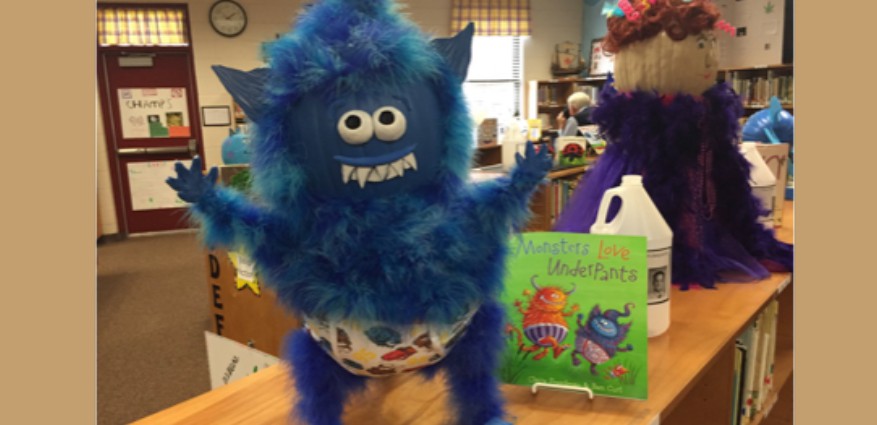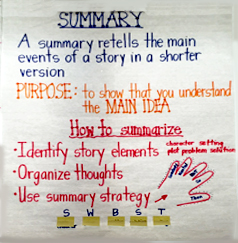Bookworms curriculum improves reading skills
 The Common Core State Standards (CCSS) introduced a substantial change in the literacy standards: children were not only required to read and write more, but also to read and write more complex texts.
The Common Core State Standards (CCSS) introduced a substantial change in the literacy standards: children were not only required to read and write more, but also to read and write more complex texts.
In light of these changes, Sharon Walpole, professor in the School of Education, and her colleague Mike McKenna of the University of Virginia started to think about literacy education differently.
Walpole and McKenna visited a school district in Virginia with substantial resources, but very low achievement in reading and writing. After observing instruction in the elementary English language arts (ELA) classroom and assessing students, Walpole and McKenna communicated surprising results to their administrators.
“We said, ‘You’re not going to believe this, but we think the work you’re giving your students is way too easy,” said Walpole. “The teachers are doing what you ask them; the students are motivated and capable, but the curriculum you’re using isn’t challenging children and their vocabulary isn’t growing appropriately.”
Bookworms was born
This initial school district became the pilot site for Walpole and McKenna’s Bookworms, a free, open-access, elementary ELA curriculum. In contrast to most ELA curricula, Bookworms meets the quantitative standards of difficulty in the CCSS and uses “real” books rather expensive reading packages made up of a large collection of books and lessons plans.
“Often, the reading series is the students’ only material,” explains Walpole. “But, when you look at these materials, there’s simply not enough. There’s not enough reading, there’s not enough writing, and they’re too expensive. Our curriculum uses books easily obtained from a bookstore or library.”
To strengthen reading comprehension and vocabulary, a teacher reading Cloudy with a Chance of Meatballs, for example, will engage students using the following prompts:
- Food falls from the sky in the town of Chewandswallow. You’ll have a chance to write a weather report for the town.
- One word in the book is accompanied. Accompanied means to travel with someone. If you go to the movies, you need an adult to accompany you. Repeat the word.
- The townspeople tried to leave town by making a sailboat from stale bread. Do you think that would work in real life? Why?
- Final discussion: Let’s map our story. Where does it take place? Who is the main character? What is the problem and how is it solved?
After they developed Bookworms, Walpole and McKenna began working closely with a school district in Jefferson County, Georgia as part of the Georgia Striving Readers project, a pre-K-12 professional development initiative.
 “Currently, I’m showing second grade teachers how to make their lesson plans interactive. We visit the schools three days each month to observe, model, provide feedback, and meet with teachers to improve the curriculum,” said Walpole. “Videos of our lessons on the Georgia Striving Readers site show the curriculum in action. Both Mike and I are modeling all the time, and this helps teachers to see that teaching in a new way is possible.”
“Currently, I’m showing second grade teachers how to make their lesson plans interactive. We visit the schools three days each month to observe, model, provide feedback, and meet with teachers to improve the curriculum,” said Walpole. “Videos of our lessons on the Georgia Striving Readers site show the curriculum in action. Both Mike and I are modeling all the time, and this helps teachers to see that teaching in a new way is possible.”
In addition to using “real” books, the Bookworms curriculum operates with three 45-minute blocks: shared reading, interactive read-aloud or writing, and small-group, differentiated skills instruction. Students learn phonemic awareness, word recognition, vocabulary, and comprehension through highly interactive lessons in very brief instructional segments. This format provides more time for knowledge building.
Demonstrating success
Now in the third year of this project, Walpole and McKenna have promising evidence that their curriculum improves student achievement. Compared to twenty other districts in Georgia who were using the same assessments, the Jefferson County students grew the most in every grade level one year after implementing the Bookworms curriculum. In the second year, they maintained the same high levels of growth.
“These results are especially impressive in a place where achievement was historically low and the students are living in poverty,” said Walpole. “Children actually could have performed worse at first, especially since this was a struggling district under the old standards and we gave them even more challenging material to read every day. It could have been that the material was too hard, but that wasn’t the case. The children rose to the challenge.”
Teachers at the three Jefferson schools regularly host visitors who want to see the curriculum in action. Instead of thinking about their schools as “struggling,” they now consider them demonstration sites.
Increasing Bookworms’s scope
Walpole and McKenna have recently received a US Department of Education grant for $702,285 to fully assess and improve their curriculum in the Jefferson County district. To date, seven districts in Georgia, four schools in Seaford, DE, and Staunton City schools in Virginia, use the Bookworms curriculum, and the Bookworms professional learning site has registered over 140,000 visits from 150 countries.
When implemented in Staunton City Schools, test scores have noticeably improved. As stated in this 2015 News Leader article, “The spring 2015 SOL test results showed a dramatic shift in performance of students in grades three through five. All schools showed significant gains in pass rates, from a 6-18 percentage point increase per school, as compared to the previous year. The division average for the three schools is now 72 percent, as compared to 62 percent the previous year. One school has an overall pass rate of 83 percent, exceeding the state average for both passing and pass advanced in every grade level that took the test.”
Now, Walpole is providing ELA support closer to home.
“I am so excited to implement Bookworms in Delaware. Seaford is our first home district,” said Walpole. “I have been using a professional development grant to provide direct assistance there, and I’ve begun building online modules that feature Seaford teachers. Kimberley Wagner, a staff member in CEHD’s Professional Development Center for Educators, works with me in this partnership.”
Walpole has been working in other Delaware school districts as well. In Brandywine, she trained all of the kindergarten through fifth-grade teachers in foundational skills instruction, the differentiated part of her Bookworms curriculum. They now use Walpole and McKenna’s materials in their response to invention (RTI) lessons.
In the Christina school district, Walpole and her School of Education colleague Steve Amendum recently trained intervention providers and will also be working closely with the fifth grade teachers.
Following a review of ELA curriculum by EdReports.org, (Aug 2016) Bookworms was found to fully meet or partially meet all of the Common Core requirements.
Evaluation of Bookworms’ effectiveness posted in the Elementary School Journal (October 2017) The Promise of a Literacy Reform Effort in the Upper Elementary Grades



